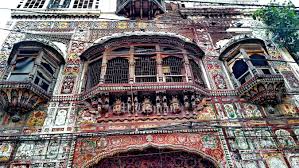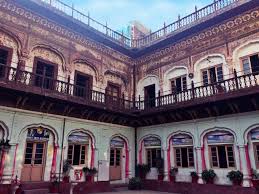
Haveli Nau Nihal: the finest preserved Sikh architecture in Punjab
By Raiq Qureshi
Islamabad: Pakistan in general and Punjab in particular has a rich history of cultural heritage — the footprints of arts and architectures of Mughals, British and Sikhs are still visible in most parts of the province narrating tales of the bygone days.
The walled city of Lahore speaks for almost every era expressing their presence and time in different regimes. Almost everyone had an emotional attachment and love with the rich artifacts of the city.

Mughals and British took care of the architectural heritage and used it as it is. But during the Sikh period which started with the emergence of Maharaja Ranjeet Singh had changed the monumental structures in one way or the other leaving their footprints on history.
Buildings and monuments of the Mughal Dynasty were either destroyed, changed or used to make residential areas and courts (darbars) to have an impact of Sikhs over Punjab which can be seen even today narrating some good and some worst stories of the time.
Along with Haveli Kharak Singh and Samadhi Ranjeet Singh, is a notable structure of Haveli Nau Nihal Singh, also known as Victoria School or Government School for Girls, Lahore. From the Sikh era of the mid-19th century, the Haveli is considered as one of the finest examples of Sikh architecture in Lahore. And this is the only Sikh-era Haveli that preserves its original ornamentation and architecture.
Talking to APP, Haji Ayatullah said that the Haveli Nau Nihal Singh was still somehow in its original position because it was taken over as a social community center. Later on, it was given to educational department which has kept and maintained it as the finest preserved building of that era.
The Haveli is located near the Mori Gate, Bhatti Gate and Lohari Gate in the southern half of the walled city. It was built around 1830 or 1840 for Nau Nihal Singh, by his grandfather and founder of the Sikh Empire, Maharaja Ranjeet Singh.
The mansion was intended to be a personal residence for Nau Nihal Singh. However, it has been used since the British era to house the Victoria Girls High School.
The base of the Haveli is rectangular in shape with its entrance on the western side. The façade is divided into two sections: with the portion housing the Haveli’s entryway profusely decorated with frescoes painted in the vivid Kangra style, and the other pierced with numerous windows.
A large jharoka balcony with sculpted brickwork and a small bulbous half dome is above the Haveli’s entry, which acted as a Jharoka-e-Darshan from which the Maharaja could view his subjects gathered below. The jharoka features five small arches, and is embellished imagery of winged humans, parrots, and frontally-viewed fish that are carved in a style which displays East Asian influences.
The winged humans resemble both Islamic descriptions of angels, but also reflect influences of the mythical Hindu garuda. The base of the dome is decorated with a serpent-like figure which echoes the Hindu snake god Naga. The Jharoka-e-Darshan is flanked by two smaller jharokas. Each of the Haveli’s jharokas is decorated with a floral pedestal.
The building has four stories, and a basement level. The fourth level is made of a small room known as Rang Mahal (“Colour palace”), or alternatively as Sheesh Mahal (“Mirror palace”), with large screens that form a space in which to catch breeze. The remaining floors were built with high ceilings, to exaggerate the height of the structure in order to give the appearance of a citadel, rather than a private residence.
The ceilings of the Haveli are made of decorated wood inlaid with glass and mirror, as well as sun-motifs in the central portion of the roof. Walls within the Haveli are decorated with false arches that each contains a small painting, with blues, golds, reds, and oranges dominating the Haveli’s colour palette. The interior is also decorated with carved wood, brickwork, and floral frescoes.
Now-a-days, the rooms are used as the classrooms and staff rooms of the school students and teachers. Courtyard serves as the assembly-hall for the school. The Haveli now presents the colors of present as well as of the past.
